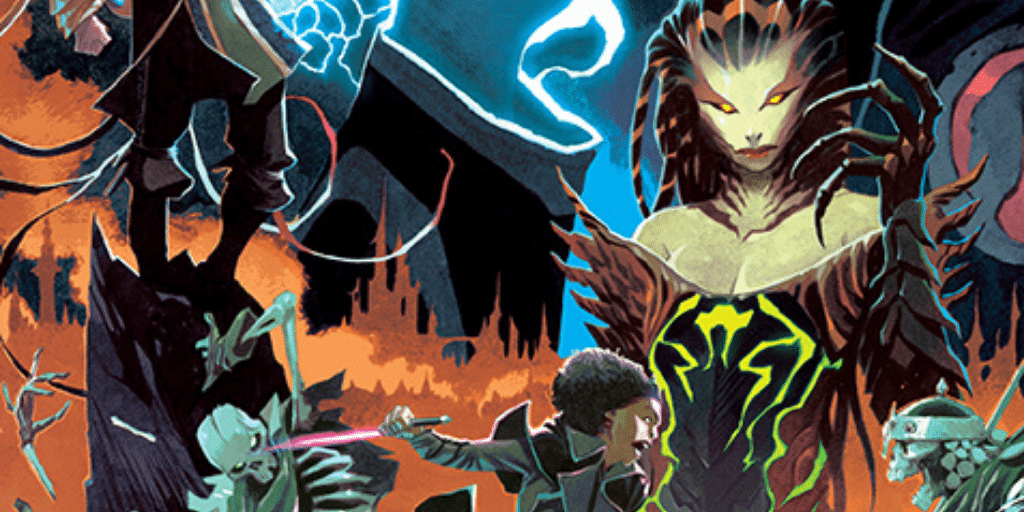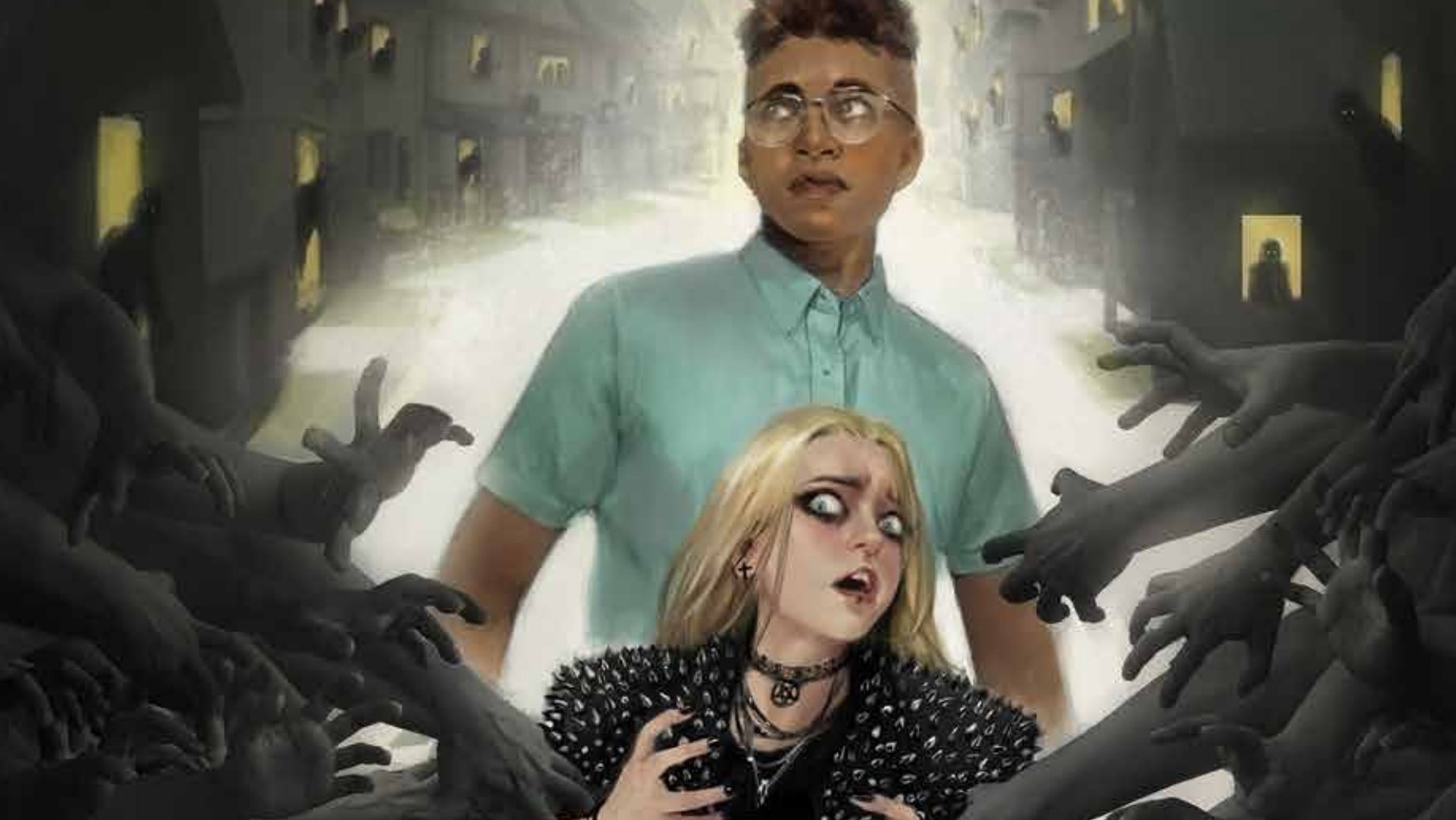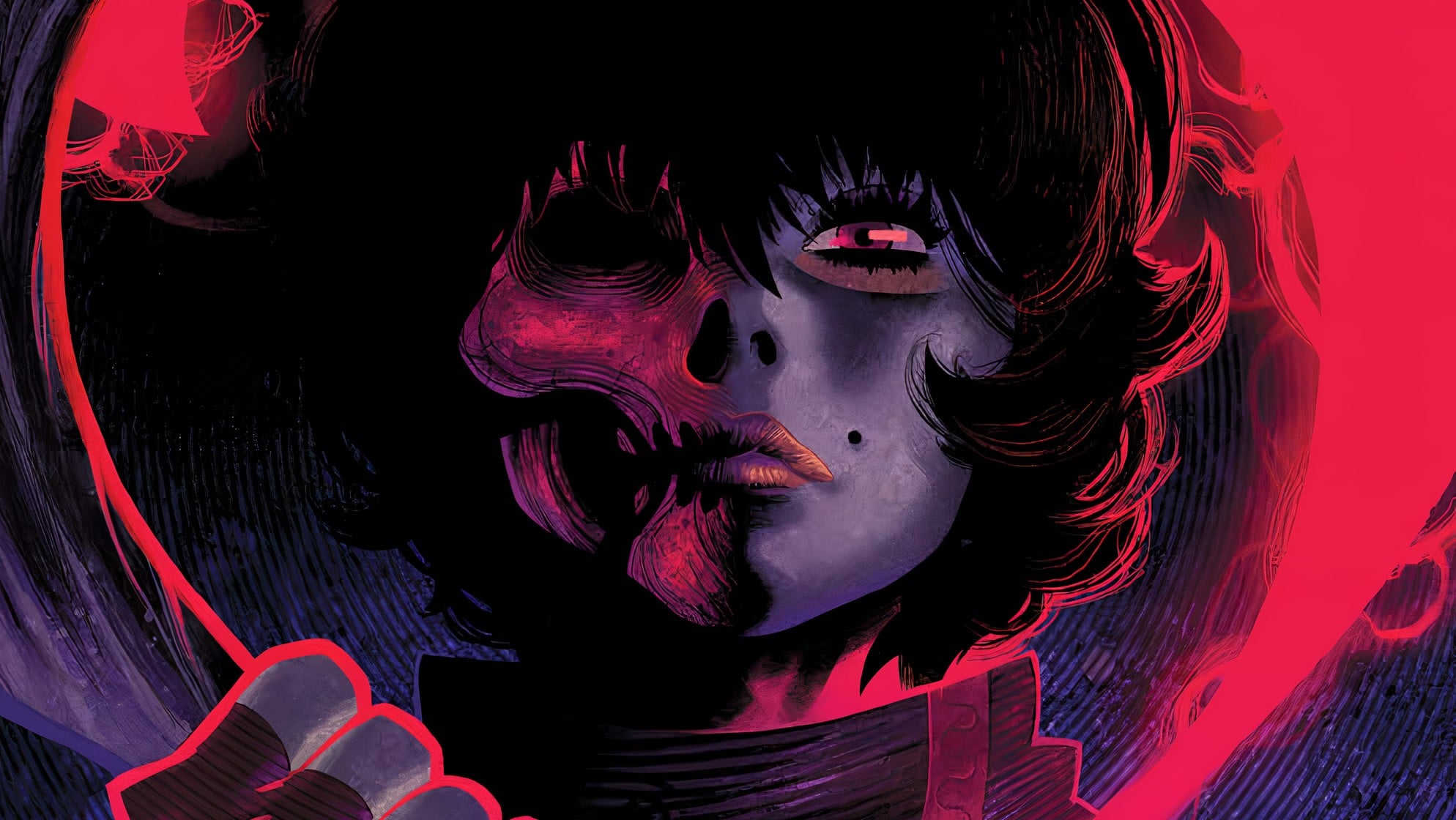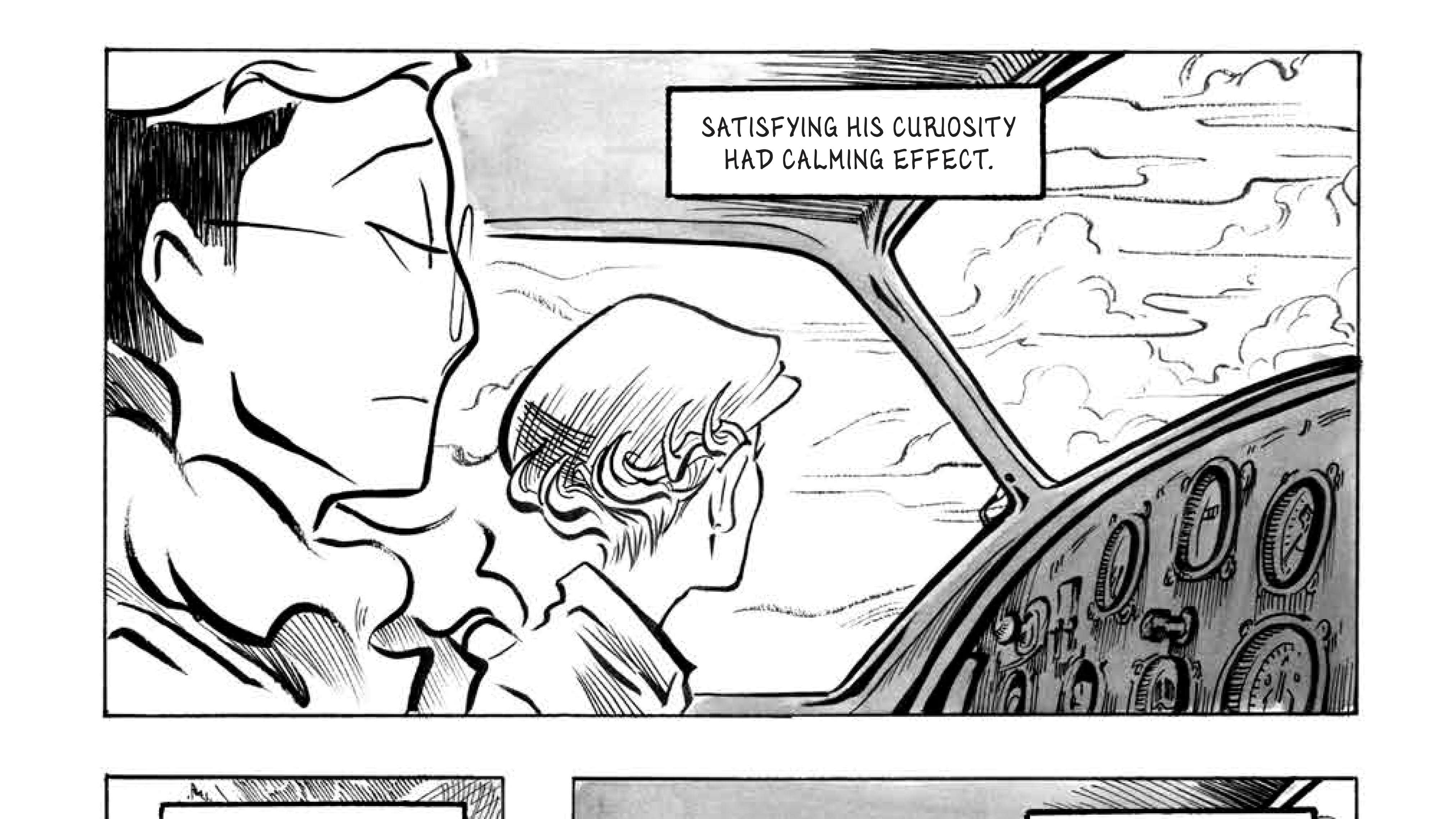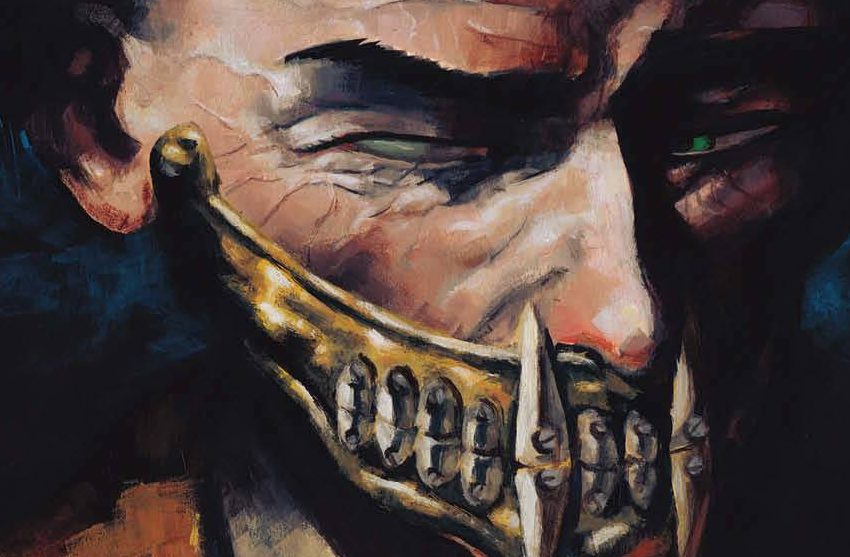An attempted assasination of three of Ravnica’s leaders, who also happen to be Planeswalkers, has shaken the city. When Kaya, Vraska and Ral Zarek turn to fellow Planeswalker Jace Beleren, his life is threatened as well, and the three are left with more questions. Written by Jed MacKay, drawn by Ig Guara, colored by Arianna Consonni and lettered by Ed Dukeshire, the lore of Magic: The Gathering comes to BOOM Studios for the first time in Magic #1.
Christina Eddleman: Long ago, in a plane much like this one, I was not a comics critic, but a planeswalker. I tapped lands and cast spells with the best of them. I didn’t host and edit a podcast about comics crossovers. I voice acted and sound edited an audio drama of Magic: The Gathering lore. (For those interested, Voice of All is wonderful.) I am absolutely thrilled to do a bit of a planeswalk back in time and take a look at Magic #1 with you, Ian.
Ian Gregory: I am thrilled to be here! I started playing Magic when I was 10 years old, and every year I would take my birthday Barnes & Noble gift cards to go buy the Magic novels. I spend a frankly unjustifiable amount of money on cards, and an even more unjustifiable amount of time thinking about the game. The Magic lore is a wild, woolly place, and I am really amped to see what this series decides to do with it.
Untap

CE: Magic seems remarkably accessible today. With the launch of the mobile app for MTG Arena, I see more of my friends picking up or returning to Magic. Unfortunately as a parent with too many hobbies already, I’m nervous about dipping a toe back into the world of cardboard crack. I have loved seeing what has happened with the game when I went from semi-competitive play, to casual play, to “I really can’t justify spending time on this anymore.” I was devastated to see Wizards of the Coast shift from free online, weekly prose stories. It was the format that got me from “person who pointedly ignores anything that doesn’t help me win this game” to “oooo stories!” I don’t know if I could tell you the state of Magic storytelling today. I believe the last thing I read was Brandon Sanderson’s Children of the Nameless. (Oh, you could also maybe count crying over the War of the Spark trailer.)
IG: I have a general idea of where things stand: Eventually, Wizards stopped producing novels because not enough people were buying them and the quality was … variable. The online weekly stories were meant to replace those but were eventually phased out in favor of more novels. One of those novels, War of the Spark: Ravnica, was not well received by fans for how it handled what was essentially the climax of over a decade of in-game storytelling. The sequel novel, War of the Spark: Forsaken was received very poorly: It reverted significant character development, ended the romance between Jace and Vraska, and even explicitly deconfirmed the very popular relationship between the characters Chandra and Nissa. Its treatment of that relationship in particular found widespread controversy and even drew an apology from Wizards for essentially queerbaiting its fans for years. After that, Wizards canceled any further novels in development and moved back to the free, weekly online story format. And now there’s a comic!
CE: Thank you for reminding me why I stopped following the Magic storyline. Chandra and Nissa were beautiful, and I’m heartbroken all over again. Much like a return to weekly stories, the telling of the Magic story through comic books is not new. There were a few titles as early as 1995 that came with a card included. Dark Horse published the Magic story in the late ‘90s. Throughout the last decade, we’ve seen a few Magic titles from IDW as well. This is our first look at BOOM’s take on the Magic story, and unlike its predecessors, it’s boldly titled Magic, with no subtitles. With such a long and storied history, do you think there is there anything new readers really need to know to dive into this issue, or is this a book for current fans, Ian?
IG: I think these first few pages do a good job of giving us an “opening crawl” of sorts. Of course, the core conceit that keeps the lore of Magic the game fresh also makes it hard to tell coherent stories. Each set features a different world, with different characters and visual designs. Planeswalkers, who can hop between planes, are recurring characters in these various stories, but every time we focus in on a plane, there’s a competition between telling the “local” story of that world and the “meta” story of our planeswalker characters. I think what sets this particular attempt apart is how unabashedly “side-story” it feels. These are recurring characters fans will recognize from other stories and the card game, but they’re not the main characters of Magic’s story. And I think that’s a smart choice.
CE: I couldn’t agree more. There’s been an awful lot of story devoted to The Jace-tice League, I mean The Gatewatch, a set of core planeswalkers, and I enjoy that this looks at characters that have been more ancillary.
Upkeep

IG: Setting this story in Ravnica was a smart choice because it’s Magic’s most popular and easily explained world. It also gives writer Jed McKay access to some well-known recurring characters who aren’t currently occupied with the larger story being told in the card sets coming out right now. Kaya, Ral Zarek and Vraska seem to make up our core cast, with a guest appearance from Multiversal Protagonist Jace Beleren. The first 20-or-so pages of this issue are dedicated to introducing us not only to our triad but also the general strokes of Ravnica. I like these three characters individually, but they definitely make for a bit of an odd party.
CE: Odd party or not, Kaya has the ability to become incorporeal and move through solid objects, which means she must be my favorite forevermore. Despite her similarities to my favorite X-Men character, she is the planeswalker I’m least familiar with. She seems cool as heck, however. So even though I’d never play Orzhov colors, I love her. She does have some fierce competition from Vraska, however, who won my heart during the Ixalan block. Give me all the ladies with questionable morals. I’m here for it. Ral Zarek has normally struck me as more of a bad boy, but we see him as a real nerd here, which I enjoy as well. Two assassins and a scientist is a dynamic that works for me.
IG: I did feel like the introductory fights were a little stilted. Maybe that’s because it’s not totally clear who this book is for (or, rather, that it can’t be for any demographic in particular). There probably aren’t enough Magic loreheads to justify this series alone, so it has to be pulling in uninvested fans or general comics readers. This means satisfying people like us, who know lots about how Magic’s world works, and explaining all of the basic concepts to potential new readers. That mix in focus presents a real challenge in how to structure this book. I hope that by sticking to these three core characters, who are all interesting and unique and well-developed to begin with, we get a good, focused story rather than something desperately trying to make sense of Magic’s lore.
CE: Answering the question of who this is for really does give us the metric to measure how successful this book is. While most science fiction and fantasy tends to pull you into the world through the eyes of a protagonist and expand upon it slowly, this issue goes from big picture to focus on these three characters. If I were a new reader, I’m not sure this would benefit me. As someone familiar with the lore, it felt more like the beginning tutorial for the Duels of the Planeswalkers video game than an immersive story. There’s a lot to get bogged down in, and I would’ve preferred an issue that dipped its toes into the Magic lore instead of trying to feed it to us all at once. I’m hopeful that after the initial overload of information, we’ll get more meaningful story development.
IG: That’s what I’m hoping for as well. I’m really hoping that this is a more self-contained story that allows the creative team to focus more on working with these characters and this setting. If every issue gets as caught up in the details of the Magic lore, I’m afraid we won’t get anywhere fast.
Draw
CE: What definitely seems to have its own distinct voice throughout this issue is Ig Guara and Arianna Consonni’s art. The art featured in Magic’s cards has evolved a lot throughout the game, and while each set features multiple artists, there is what you might call an MTG house style of art. This is not that. Consonni’s colors are more muted, while Guara still gives us enough of the Ravnica I’d expect. Given that art and coloring for each guild typically has such a distinct and immediately recognizable feel, that may have given a more disjointed feel to the book. Overall it succeeds as comic art for me, it just seems to lack that Magic feel I craved.
IG: Magic is a kind of unique franchise in that it doesn’t have a single cohesive visual identity. I agree that there’s a house style, but it’s a relatively recent development and lots of Magic cards still break that mold. The look of Magic has been created by the collaborative efforts of hundreds of artists over nearly 30 years now. Is the look of Magic Stasis, Akroma or Soulherder? I think maybe that visual diversity is the key to representing Magic, and while we only get a brief glimpse of Zendikar (a different plane than Ravnica), it didn’t appear to be stylistically different than Ravnica. I think, ultimately, I agree with you. This is perfectly standard comics art and coloring, but it lacks that special flair.
CE: It is likely not that it didn’t feel like Magic art. As you point out, Magic has had such a variety. It just didn’t feel like the Ravnica I was most familiar with. The art from nearly any Magic card from the last decade could be framed on my wall and I’d be happy with it. There is a grandness and a lack of dramatic lighting that I believe is the real difference for me here. What I think I loved most about the art was the depiction of the Blind Eternities. I hardly needed the narration at all for a wonderful sense of what it felt like to be any of our three planeswalkers moving through them. It helps that I got some of that dramatic lighting I craved, too.
IG: I totally agree about the Blind Eternities scene. Visually, that was such a treat, and a nice demonstration of our characters’ mindsets. I actually think that might have clued me in to what I’m missing. Magic: the Gathering is such an abstract game. What does it mean to use an enchantment like Counterbalance, or cast a spell like Time Spiral? The game of magic is so wide-open and strange that it feels almost disappointing to see these characters act and behave like superheroes instead of multidimensional wizards. There’s nothing wrong with the art, and I actually think some of the fight and landscape scenes are beautiful and well done, but it doesn’t capture what defines Magic to me.
CE: I love this observation. There is something so beautiful about the prose depictions of harnessing mana and casting a spell. Now that I think of it, I’m not sure there’s a mention of mana as a power source at all. The core mechanic of using your environment, your lands, as a source for your power is totally ignored in this issue. The art is a comic success, it just needs a bit more … magic.
IG: I’m a bit mixed on this comic. I do appreciate that it must have been really hard to figure out exactly what to do with this first issue, whom to target and how much needed to be explained. I even think MacKay made some smart choices about whom to focus on and where to set the story. I just didn’t feel that this first issue did enough to fully hook me, and it couldn’t quite match up to the strangeness and wonder of the source material. That said, the hard part is out of the way, and I am looking forward to where the second issue and beyond will take this story.
CE: While this first issue was a little slow to start for me, I am interested enough in the Magic story and the characters here to continue reading. It gives a little too much exposition for someone new to Magic altogether to follow, but perhaps just enough to get someone who plays the game to gain an interest in the lore. Taking on the Magic lore is a challenge, and this was quite a respectable attempt.
Sideboard
- Ral Zarek summons a picture-perfect Nivix Cyclops during his fight. Nice touch!
- Kaya referring to Jace, The Most Important Guy In the Multiverse, as “puzzle boy” delighted me to no end.
- Guara has somehow made Jace look far too handsome and well adjusted, but absolutely nails Vraska’s expression upon seeing him.

